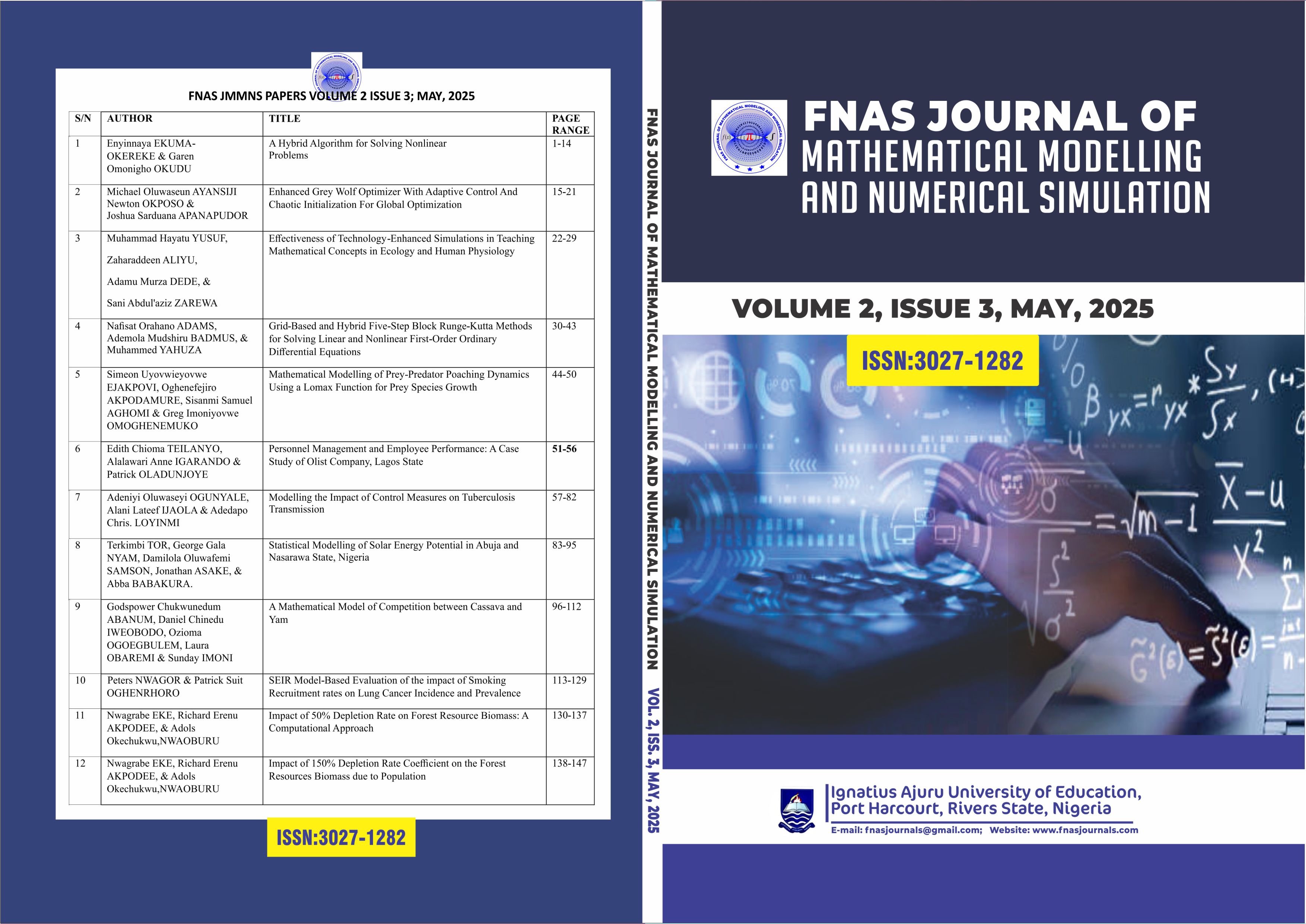Impact of 50% Depletion Rate on Forest Resource Biomass: A Computational Approach
DOI:
https://doi.org/10.63561/jmns.v2i3.870Keywords:
Industrialization, Forest Resources Biomass, Population Density, Population PressureAbstract
This study investigates the impact of anthropogenic activities on forest resource biomass through a computational modeling approach. In this study, we analyze the effects of urbanization, deforestation, and agricultural expansion on biomass density across diverse forest ecosystems. Our model integrates socio-economic factors, such as human population density and population pressure to simulate the degradation of forest resources over time. Results indicate a significant negative correlation between human activities and biomass productivity, particularly in regions subjected to intensive agricultural practices and urban sprawl. The findings highlight critical thresholds beyond which forest ecosystems experience irreversible biomass loss, emphasizing the need for sustainable land management strategies. By forecasting potential future scenarios based on current trends, this research provides a framework for policymakers to mitigate the adverse effects of anthropogenic activities on forest biomass, promoting conservation and restoration efforts. The study underscores the importance of computational approaches in understanding complex ecological interactions and guiding sustainable development initiatives.
References
Aliyu, A., Modibbo, M. A., Medugu, N. I., & Ayo, O. (2014). Impacts of deforestation on socio-economic development of Akwanga, Nasarawa State. International Journal of Science, Environment and Technology, 3(2): 403 – 416.
Eke, N. (2025). Numerical Prediction of the impact of anthropogenic activitieson forest biodiversity.
A PhD Thesis Submitted to the Department of Mathematics, Rivers State University, Port Harcourt, Nigeria.
IUCN (1992). Protected Areas of the World: A review of national Systems. Volume 3:Afrotropical. IUCN, Gland, Switzerland and Cambridge, xxii+360pp.
Mbakwe, R. C. (1996). The process of deforestation in Nigeria and its ecological consequences. In Proceedings of the Annual Conference of Forestry Association of Nigeria, Minna Niger State.
Mohammed, A. S. (2014). Deforestation and its effect on livelihood patterns of forest fringe Communities in the Asunafo North Municipality. A thesis submitted to the school of Graduate studies, Kwame Nkrumah University of Science and Technology, in partial fulfilment of the requirements for the award of Master of Science in Development Policy and Planning at the Department of Planning, College of Architecture and
Planning.
Ramdhani, V., Jaharuddin & Nugrahani, E. H. (2015). Dynamical system of modelling the depletion of forestry resources due to crowding by industrialization. Applied Mathematical Sciences, 9(82), 4067 – 4079. DOI: https://doi.org/10.12988/ams.2015.53259
Eguiguren, P., Fischer, R., & Günter, S. (2019). Degradation of ecosystem services and deforestation in landscapes with and without Incentive-Based Forest Conservation in the Ecuadorian Amazon. Forests, 10(442): 1 – 26. DOI: https://doi.org/10.3390/f10050442
Ekaka-a, E. N. (2009). Computational and mathematical modelling of plant species interactions in a harsh climate, PhD Thesis, Department of Mathematics, The University of Liverpool and University of Chester, United Kingdom.


